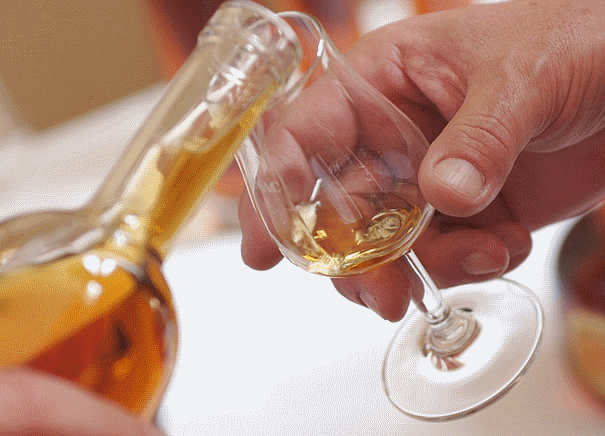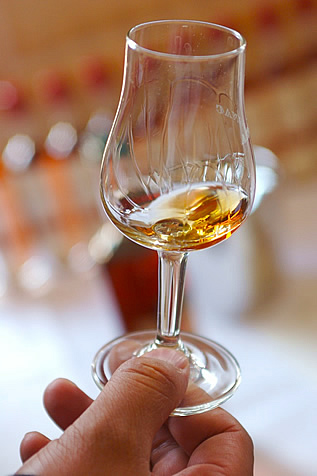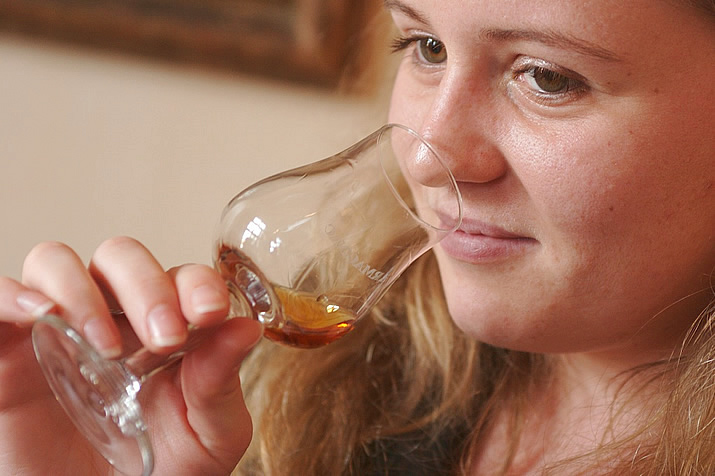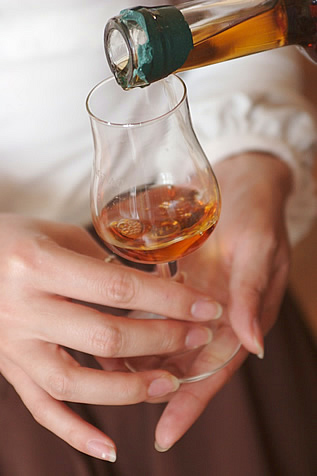
En cliquant sur Continuer, je certifie avoir plus de 18 ans.

En cliquant sur Continuer, je certifie avoir plus de 18 ans.
Tasting is the examination of Armagnacs by the senses. This tasting method is more like perfume analysis than wine tasting
The glass :
The Armagnac glass must help to contain and then give expression to the aromas. The balloon glass is not the best suited, although it is the type most often proposed for a tasting. The ideal glass is of the “Tulip” type, as shown opposite
Glass warming and the addition of water :
A few decades ago our predecessors presented Armagnacs with a high degree of alcohol under the “Fine Armagnac” name. They then advised reducing the “fire” of the alcohol by warming the glass in the palm of the hand to permit the evaporation of the primary alcohols, or alternatively by adding a few centiliters of water.
Nowadays, we make sure to present Armagnacs ready for tasting and it should be certain that the eau de vie is at room temperature.


|
||||
| Armagnac’s four noses: |
 |
|
- 1st nose: glass still, nose an inch or two away |


Always have a good mouthful of water before tasting Armagnac, then put a little Armagnac in your mouth, mixing it with saliva, and swallow. In this way your taste buds are given information about the nature of the product, and you won’t suffer from the alcohol level in your subsequent samplings.
Appreciating a great Armagnac is one thing, but describing the sensations experienced is quite another.